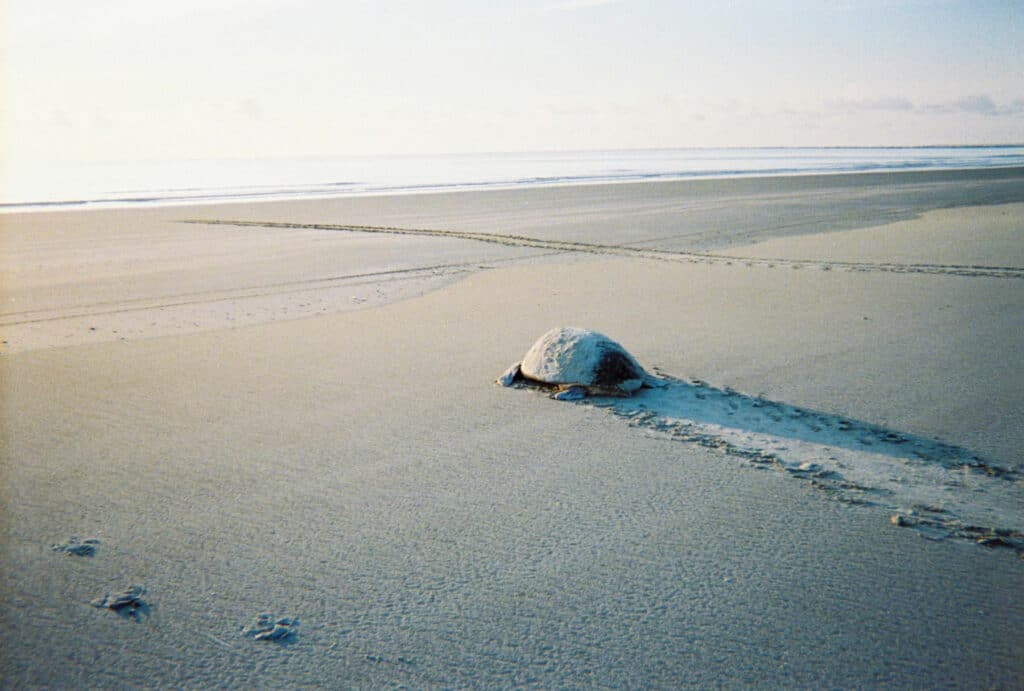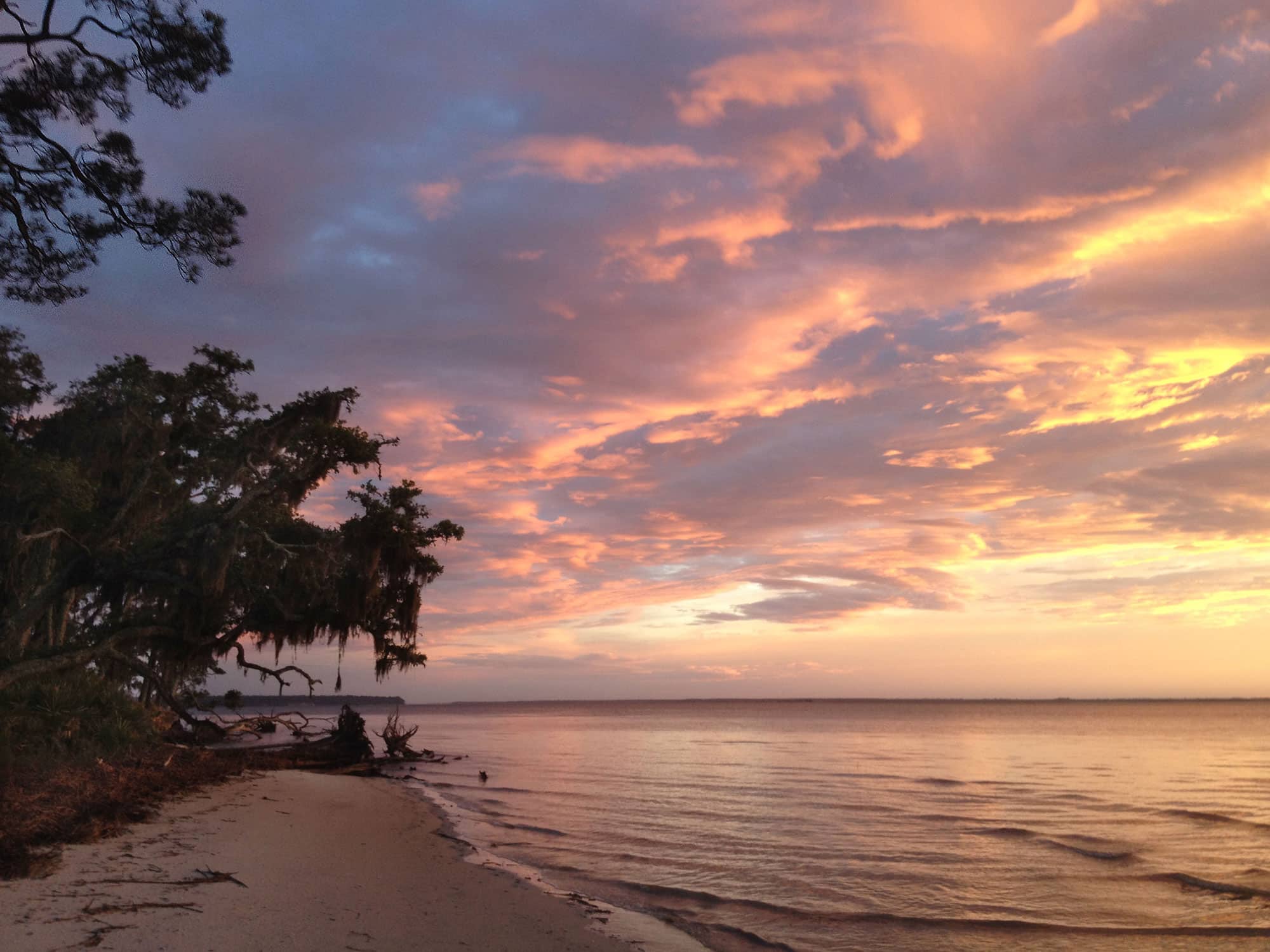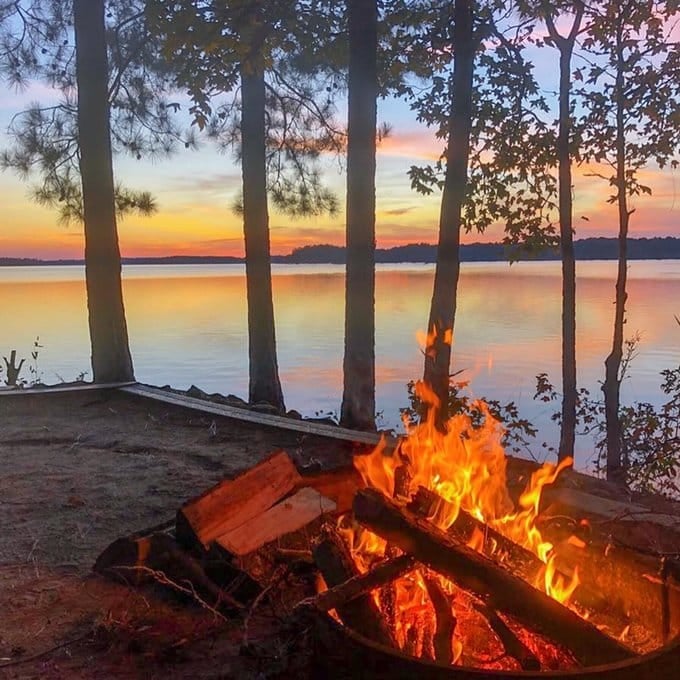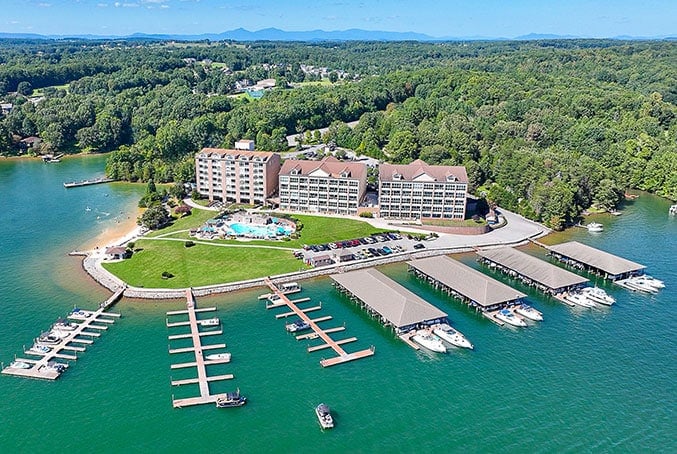Cumberland Island—a wild, pristine seashore in southeast Georgia—could soon get noisy and crowded
In Ms. Faron’s First Grade Class, I often ended up in the Quiet Corner. Once, I shot a paper ball into the trash can from my desk in three-point land. Another time, when it was my turn to read the next paragraph, I decided to read it as loudly as possible.
Looking back, I have to admit I kind of liked being sent to the Quiet Corner. It was calm and peaceful there. A breeze trickled through the window, and birds often flitted past. The Quiet Corner was both a punishment and a privilege.
Years later, I was living in Atlanta, working long hours, commuting through hellish traffic, and slowly dying inside. So I sought out my own quiet corner. Late one night, I hopped in the car with my backpack and drove to the southeast corner of Georgia, headed for the most remote island on the map: Cumberland Island.
Cumberland is a national seashore tucked away from the world. Accessible only by a ferry, the island is the largest barrier island wilderness in the country, with windswept marshes, old-growth live oak forests, and a wild, pristine beach.

The island is home to dozens of rare and endangered species. Manatees forage along the marsh rim, and wood storks glide over alligator-filled lakes. Endangered shorebirds—including red knots and piping plovers—flock by the thousands on its southern shores. Four species of endangered sea turtles nest on Cumberland Island, including the loggerhead sea turtle. More loggerhead sea turtles nest in this corner of the world than anywhere else on the planet.
On my first visit, while soaking in a starry night on the empty beach, I watched a loggerhead sea turtle crawl ashore to nest. She heaved her 300-pound body into the dunes, stopping every few minutes to catch her breath. After she dug a hole in the sand with her rear flippers, she deposited around 100 ping-pong-ball shaped eggs, buried them, and lumbered back toward the ocean, entrusting her offspring to the island. A sliver of moonlight glistened on her shell as she slowly disappeared into the wild waters. It was—and still is—the most magical and powerful natural phenomenon I have witnessed.
It’s not just sea turtles who depend on Cumberland. Thousands of worn-down, work-weary humans like me are nourished by the island. We seek out its wildness, solitude, and, perhaps most of all, its silence. On the island, the only sounds are the ocean lapping the shore, the staccato calls of flocks of shorebirds, and the wind trickling through the Spanish-moss beards of ancient live oaks.
Unfortunately, those sounds could soon be drowned out by motorboats, concession stands, and big crowds.
The National Park Service is proposing a management plan that would allow an unlimited number of motorized boats to access the island. The plans include the construction of docks, developments, and infrastructure to accommodate a massive influx of powerboats, yachts, catamarans, and even cruise ships.
The motorized access developments on Cumberland Island would be constructed in the worst possible places: in the exact spots where manatees are known to forage, sea turtles regularly nest, and endangered piping plovers flock.
Right now, manatees are dying of starvation in record numbers as their seagrass foraging habitat disappears. Biologists have desperately resorted to feeding manatees lettuce to sustain them through the lean winter months. In addition to loss of foraging habitat, boat strikes are the other leading cause of manatee mortality. Nearly every manatee is scarred by multiple propeller strikes. The motorized access proposal for Cumberland Island would flood the manatee foraging areas with boats and further threaten their survival.
Manatees won’t be the only victims. The motorboat development area is also part of loggerhead sea turtles’ critical nesting habitat. Turtles who crawl ashore on Cumberland Island were born there decades ago. After they leave the island, sea turtles migrate 10,000 miles across the Atlantic to mature, and then return to the same beaches where they were born to nest. Pregnant sea turtles returning from a trans-Atlantic journey to nest on Cumberland Island will find a massive boat landing instead.
Even more worrisome are the North Atlantic right whales who also migrate just offshore from Cumberland Island each year. The waters near Cumberland Island are the only known calving grounds for North Atlantic right whales—the most endangered whale in the world. Fewer than 100 reproducing females remain, and they all journey to Cumberland Island’s offshore waters to give birth and raise their young.
Why would we fill those waters with unlimited and unregulated numbers of motorboats?
Right whales have blowholes with a distinct, V-shaped spout. Their unique double jets of water spray are visible from the offshore waters of Cumberland Island—at least for now. With fewer whales and more boat traffic proposed in their only known calving grounds, North Atlantic right whales and their calves are more endangered than ever.
The proposed plan would also dramatically increase the number of visitors to the island and allow motorbikes and commercial stores in the park. It would open the island to increased development, crowded beaches, and buzzing motorboats.
Is this the direction we want the country’s wildest national seashore to be headed?
Don’t get me wrong: I want more people to experience Cumberland Island as I have. But there are ways to improve visitation and access without motorboat traffic and beach development. Better and more affordable ferry access to the island would be a good first step, and it would be far more inclusive and equitable than allowing unlimited private motorized access to the island from yachts and cruise liners.
Will Cumberland become another crowded, developed, motorized beach along the Eastern coast? Or can we keep one special island unmarred and unspoiled? There are plenty of other beaches for yachts and development, including Jekyll Island and St. Simon’s Island just north of Cumberland and Fernandina Beach directly south. Cumberland is one of the last wild islands left.
Encourage the Park Service to manage Cumberland Island for the greatest good: the protection of this global biodiversity sanctuary—and a refuge for humans, too. You are co-owner of this island oasis. Even if you never step foot on Cumberland, this Quiet Corner belongs to you, and your voice is more important than ever in deciding its future.
Get loud to protect this Quiet Corner:
Email comments to Cumberland Island National Seashore Superintendent Gary Ingram at
cuis_superintendent@nps.gov.
Cover Photo by Sasha Greenspan








